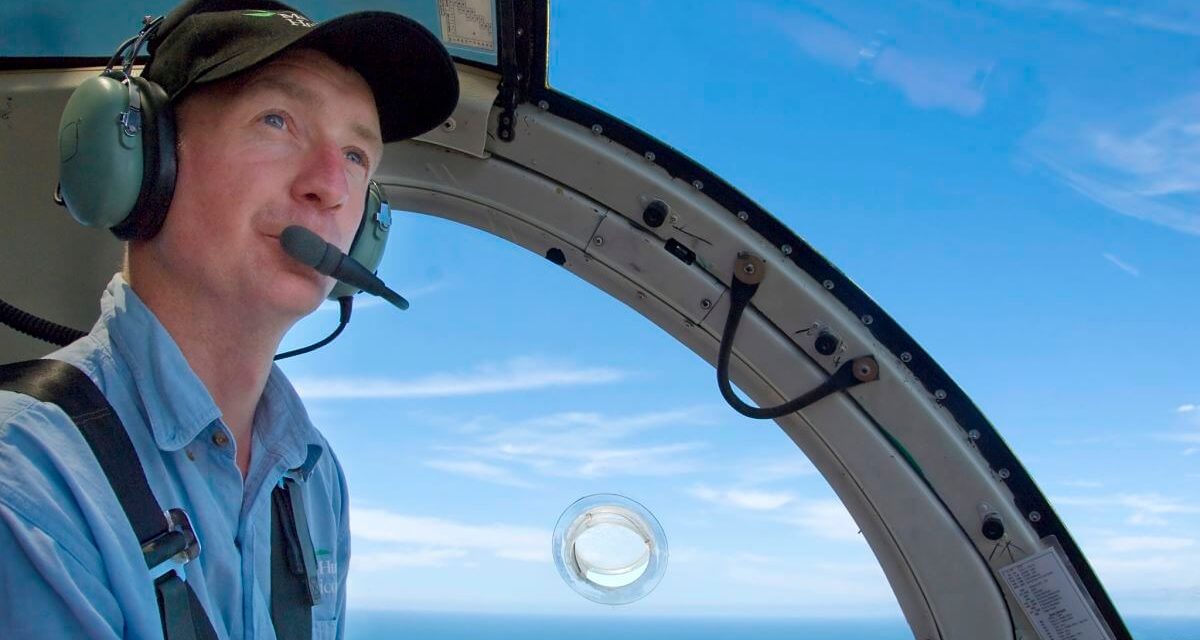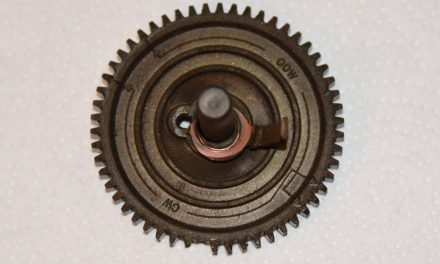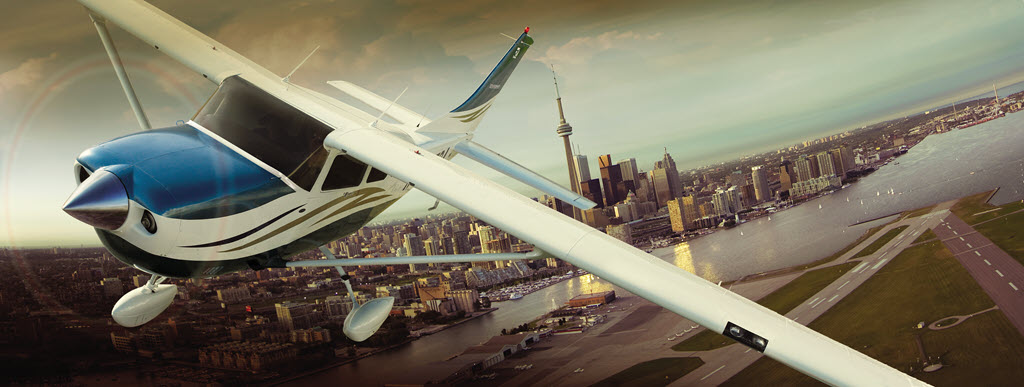
By Dean Zakos
This article is an excerpt from Laughing with the Wind, Practical Advice and Personal Stories from a General Aviation Pilot by member Dean Zakos. The book is available from Square Peg Bookshop at squarepegbookshop.com, Amazon.com, Barnes & Noble, Chapters Indigo (Canada), and other retailers. An eBook version will also be available.
When we perform an action over time, routinely and consistently, it can become a habit. If we perform the action correctly, it can become a good habit; if not, it can become a bad habit. Bad habits, if we fail to recognize and correct them, can create additional and unnecessary risk in our flying.
I readily and candidly admit that I have been guilty (multiple offenses) of each of the bad habits discussed in this article. If we want to change anything about our flying, we must first recognize that change is necessary.
As pilots, I am reasonably sure we did not start our primary training learning bad habits. CFIs, almost universally, have good habits and attempt to impart their knowledge and good airmanship practices to their students. What happens over time, though, if there is no one sitting next to us such as another pilot or CFI in the right seat, is that we can lose the focus and consistency necessary to maintain good flying habits. Adding experience and building hours can bring complacency. Complacency can make us lazy about flying fundamentals.
Here are five bad habits that we should recognize and correct in our flying.
1. Not looking outside the aircraft
One of the most common complaints from CFIs and DPEs is that student pilots and private pilots taking checkrides fail miserably at keeping their heads up and looking outside the aircraft. Obviously if you are in IMC you will need to keep your head down, but if you are flying in VMC, you will need to keep your head up.
There is an unnaturally strong but understandable attraction to the electronic flight displays, iPads, and other colorful devices that are available to us in the cockpit. Never has there been so much technology and data accessible to pilots. It is a blessing and a curse.
Keep in mind that a good pilot’s eyes are always moving. If your head is down and you are staring at a screen, you are not flying the airplane. A pilot’s attention and scan should be allocated between outside and inside. In VFR conditions, the ratio between outside scan and inside scan should be balanced decidedly in favor of the outside scan. Only allocate a minimal and necessary amount of time to your scan inside the cockpit. Yes, TCAS and ADS-B traffic alerts are available in some aircraft, but not all. Also, birds and drones don’t have to be ADS-B compliant.
Note also, the faster your airspeed, the less time available to you to react. Closing speed with another aircraft or with birds may allow you only a few seconds of reaction time. If you are head down for long periods of time, you waste valuable seconds that could have given you a chance to see and avoid, thus averting a potential disaster.
Looking outside of the aircraft does take some effort if done correctly. Remember from your student pilot days that you were taught to scan one section of the sky at a time to allow you to focus on and recognize a moving object. Not looking out of the cockpit frequently, or not using an adequate sky scan, can drastically impair the effectiveness of your VFR responsibility to see and avoid.
How do you correct this bad habit? Easy. Make the conscious decision to look out the window and perform an adequate, repeated scan for traffic or other hazards. Be acutely aware of the time you are spending with your head down. If you are tuning a radio frequency, checking SiriusXM or FIS-B weather, or keying a new destination or waypoint in your GPS, it is always better, if you cannot do it quickly, to allocate your time between completing the task and going “heads-up” and scanning for traffic.
2. Not including all instruments in our scan
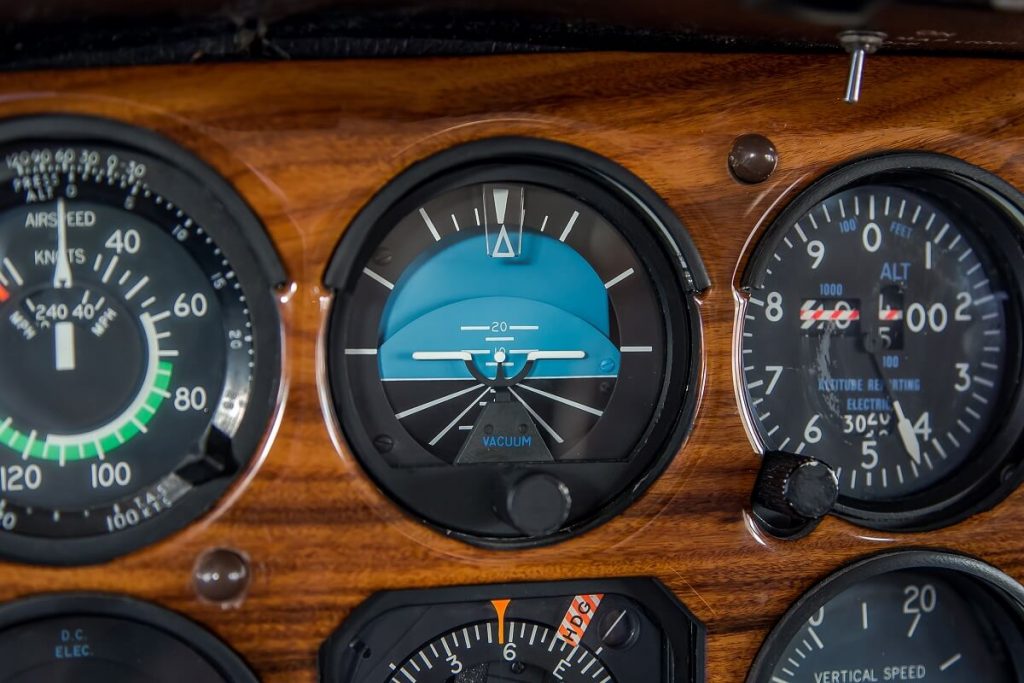
Although we should be spending most of our time scanning outside of the cockpit, we still need to scan the instruments and gauges periodically. If you are IFR rated, you have been trained to use an instrument scan and cross-check. You need to do this diligently and well to keep the shiny side of your aircraft up when in the clouds. However, even with VFR flights, a good instrument scan is still important.
Most VFR pilots likely spend their attention on the artificial horizon, altimeter, heading indicator, airspeed indicator, and the tiny aircraft symbol moving along the magenta course line on the GPS. The common notion is that there is not much else to look at. That’s incorrect. There are a lot of other instruments and gauges that you should be looking at and including in your routine scan.
A few years ago, I was on a short VFR flight for breakfast with a non-pilot friend. I thought I had a satisfactory scan going. At some point my friend asked, “Hey, what is that light on for?” as he pointed to my side of the cockpit. The light he was referring to was in the annunciator panel. It was the “low vacuum” light. It had completely escaped my attention even though it was directly in front of me. I then looked at my primary instruments and cross-checked. Next, I looked at the suction gauge. It was reading “zero.” Luckily, we were
in VFR conditions. Once clued-in by my non-flying friend, I readily recognized the slowly failing vacuum instruments!
What happened? Well, the entry that went into the maintenance logbook later was a vacuum line failure and repair. What really happened? A failure of the pilot (me) to do an adequate scan. I am still not sure how I could miss both the warning light on the annunciator panel and the suction gauge, but I did. I suspect that I had picked up the bad habit over time of failing to include all the instruments and gauges in my panel scan, choosing the lazy way instead and scanning just a few instruments while we were in straight and level VFR flight.
Good pilots, if they are going to stay ahead of their aircraft, include all the instruments and gauges in their scan. You do not have to look at everything on each pass, but you need to include all the flight instruments, engine instruments, ammeter and circuit breakers, and any warning lights installed in your panel. One of the first signs of carb ice is a reduction in power, almost imperceptible at first. If you are regularly including your engine tachometer or engine analyzer in your scan, you may quickly notice the small drop in rpm and be better able to monitor it and react quickly to it if necessary.
Fuel management, the clock, and fuel gauges (especially in low-wing aircraft) should also be routinely included in your scan. Failing to note the time and when to switch fuel tanks or failing to understand how much fuel you have remaining and in what tank(s) can only lead to moments of excitement or grief (or both).
How do you correct this bad habit? Easy. Take some time before your next flight and identify, other than the primary instruments, all the other instruments, gauges, and warning lights in your panel. Think about how you will routinely incorporate them into your scan on a periodic basis. Some pilots use a “flow-check” scan starting at a point on the side panel and then flowing across from one side to the main panel, to an overhead panel, to between the seats, and to the other side panel. Other pilots use a scan of groupings or clusters of instruments such as primary instruments, engine instruments, fuel system, electrical system, etc. Then, as you fly, make sure you scan each of the instruments, gauges, and warning lights on a consistent basis so that it becomes routine.
Next, think about how to make sure you are reminded to conduct your scan. Use a timer in your panel, a clock, or your watch. Set the interval in number of minutes and get into the habit of an effective, full scan. One easy way to do this is to perform a complete scan every 20 minutes: on the hour, 20 minutes after the hour, and 20 minutes to the next hour.
3. Not using rudder effectively
Pete Aarsvold, CFI and EAA Chapter 93 member, told me that when he is providing a flight review for a pilot, after use of preflight checklists, one of the first actions he evaluates is if the pilot uses right rudder on takeoff to counteract left turning tendencies. Apparently, there are GA pilots out there who once understood left turning tendencies in single-engine airplanes when going to full power but must have forgotten that helpful information after the written test and checkride. Bad habit? I think so.
You can fly a light airplane without use of the rudder. It is just an inefficient and inelegant way to fly. I knew a student pilot in Racine, Wisconsin, many years ago who had soloed in a Cessna 172 and was doing his cross-country flights. He proudly mentioned to me that he never used the rudder pedals in the air! He did not think it was necessary. I heard later he gave up flying prior to his checkride. It’s unfortunate when a student pilot stops flying, but I think he would have had trouble with any examiner if he allowed his feet to remain flat on the cockpit floor during the checkride.
Good pilots use the rudder well. They are intimately aware of the feel of the aircraft. Coordinated flight is the hallmark of a pilot who knows what he or she is doing. Next time you fly in the right seat with a pilot friend, notice if rudder is being applied correctly. If it is, you will experience a smooth, comfortable flight without unintentional slips or skids.
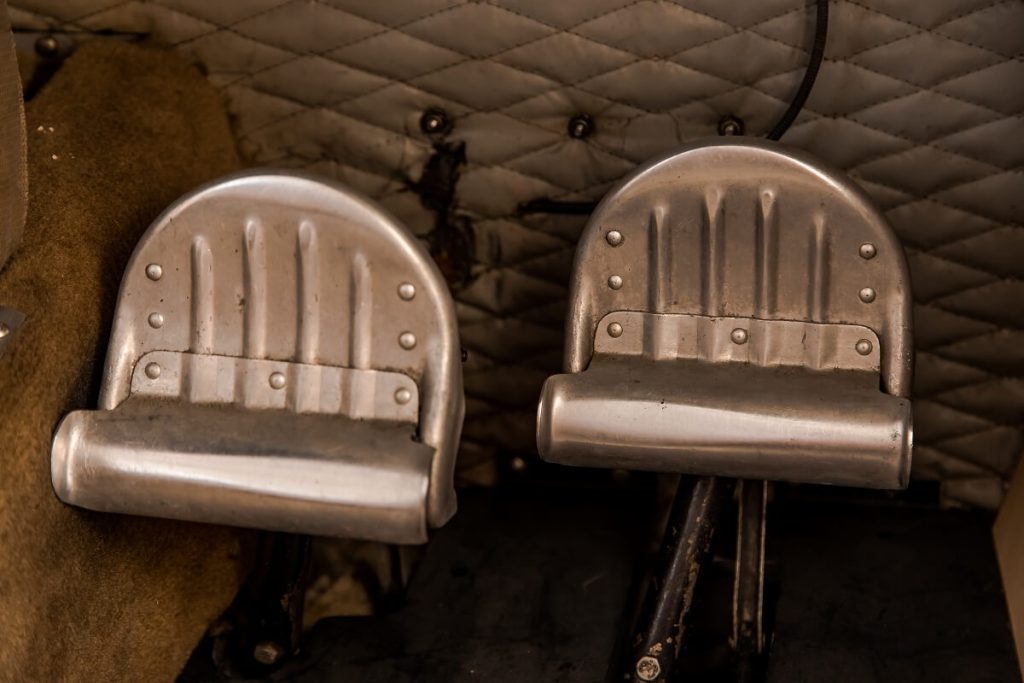
How do you correct this bad habit? Easy. Be aware if you are coordinating ailerons and rudder properly. Remember, in addition to the seat of your pants, there is an instrument in your panel that will provide you with immediate confirmation of your efforts. It is called a turn coordinator. In older airplanes, a similar instrument is the turn and slip indicator. Each of these instruments has a ball (technical term — an inclinometer) that should remain centered between two reference marks if your control inputs are coordinated. In straight and level flight or in turns, if you are slipping or skidding the aircraft inadvertently, you need only notice the position of the ball and “step on it.” For example, if the ball is to the right, step on the right rudder pedal. That action adds correct rudder input and centers the ball.
4. Not using a light touch on the controls
Good pilots are not heavy-handed. I am told that flying a light GA aircraft is not the same as flying a B-24 Liberator heavy bomber. You don’t need to muscle a small airplane around the sky. After coordinated turns, the next best way a pilot can show off his or her skills is by controlling the aircraft with a light touch and smooth movements.
I was taught that, from the left seat, you fly with your left hand on the yoke and your right hand on the throttle (assuming standard center position for the throttle). It surprises me when I see flying videos of pilots who fly GA aircraft with both hands on the yoke. This is not necessary and often leads to over-control and imprecision in turns. If your aircraft is properly trimmed, it should take very little exertion to push, pull, or turn the yoke and put the airplane where you want it. In smooth air, two or three fingers are all the control you should need. Leave muscular, two-handed flying to the heavy bomber pilots.
Over time, it is easy for pilots to lose some of the light touch and buttery smoothness they employed when they had fewer hours. When a pilot is new to flying, it is natural to go slow and easy, making only small, incremental control movements, until experience is gained. Then some pilots lose all inhibitions and start to treat the controls roughly — forcefully mistreating the throttle, aggressively handling the yoke, or stomping on the rudder pedals — until these actions become a bad habit.
How do you correct this bad habit? Easy. Slow down. Make a decision to treat the airplane’s controls lightly and smoothly. If you are staying ahead of your aircraft and anticipating what is required of you and your aircraft, there should be no need for sudden, abrupt, or aggressive manhandling of the controls.
5. Not being courteous on the ground or in the air
With advances in technology in the cockpit, more complicated operating and airspace regulations, and the increased emphasis on risk management, CFIs and seminar presenters today have less time to emphasize proper pilot civility. In the old days, this part of the instruction syllabus was quaintly referred to as “ground courtesy” and “air courtesy.” Put simply, good pilots are polite pilots.
Jeff Skiles, co-pilot of the Miracle on the Hudson, is an experienced and accomplished professional pilot. Someone with his résumé could exhibit an outsized ego. He doesn’t. Watch the YouTube video of him flying the B-29 FIFI. Notice how often he uses “please” and “thank you” when he interacts with the flight crew to perform basic actions in the cockpit.
I am aware of only one FAR related loosely to courtesy. It is a safety regulation rather than one of personal conduct. 14 CFR Part 91.113 provides certain right-of-way rules for VFR pilots that are designed to reduce the chances of a midair collision. However, even if there are no “polite pilot society” FARs, here is a short list of what could be included (black tie or evening gown optional).
- Treat all ground personnel, FBO desk or service personnel, and others you meet in your flying with courtesy and respect.
- Be aware of your prop blast when you start up, taxi, turn, or run up your aircraft.
- Be aware of taking an inordinate amount of space or time in a run-up area.
- Be aware of blocking taxiways, intersections, or critical ramp spaces.
- Listen, look for, and locate other aircraft prior to taking the active runway.
- Be polite in the cockpit or on the radio to everyone with whom you communicate.
- Treat ATC with respect.
- Make the appropriate radio calls when arriving and departing the vicinity of a nontowered airport and when in the pattern.
- Be accurate with distance and altitude when providing position reports.
- Don’t waste time during radio calls fumbling for words, “umming” or “ahhing” or creating “dead air” when your mic is depressed.
- Only use designated chat frequencies for non-essential “shooting the breeze” conversations.
- Don’t use a cellphone in the air that could distract you or listen to loud music that may keep you from hearing a radio call (no different from driving in your car).
- If you rent, keep the airplane clean, fueled, and leave it in better condition than you found it.
How do you correct this bad habit? Easy. Remember the golden rule for pilots: “Treat pilots, controllers, and airport personnel as you would like to be treated.” “Please” and “thank you” still go a long way today.
We can all be better pilots and improve our flying habits. What bad habits do you recognize and want to change?
Dean Zakos (ASEL, instrument) is the author of Laughing with the Wind, Practical Advice and Personal Stories from a General Aviation Pilot. He lives and flies (maybe add what you fly?) in the Madison, Wisconsin, area. The book is available at squarepegbookshop.com.

